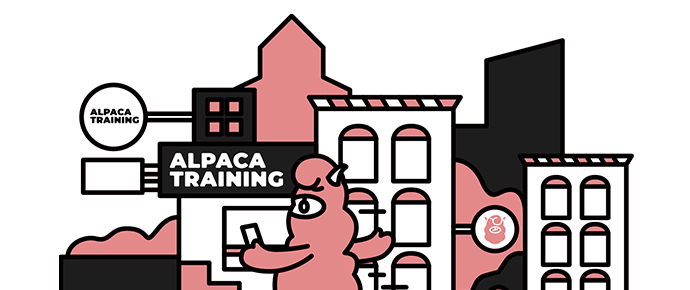剑桥雅思真题19阅读回忆版Test2 Passage 1
剑桥雅思19收集了雅思考试真题共4套题目。羊驼雅思整理了剑雅19考试题Test 2的阅读题Passage 1回忆版,供考生们备考时复习参考。

相关阅读:剑桥雅思真题19阅读回忆版Test2 Passage 2
READING
READING PASSAGE1
You should spend about 20 minutes on Questions 1-13, which are based on Reading Passage 1 below.
The industrial Revolution in Britain
The industrial Revolution began in Britain in the mid-1700s and by the 1830s and 1840s had spread to many other parts of the world, including the United States. in Britain, it was a period when a largely rural, agrarian* sociely was transformed into an industrialised, urban one. Goods that had once been crafted by hand started to be produced in mass quantities by machines in factories, thanks to the invention of steam power and the introduction of new machines and manufacturing techniques in textiles, iron-making and other industries.
The foundations of the Industrial Revolution date back to the early 1700s, when the English inventor Thomas Newcomen designed the first modern steam engine. Called the 'atmospheric steam engine’, Newcomen's invention was originally used to power machines that pumped water out of mines. In the 1760s, the Scottish engineer James Watt started to adapt one of Newcomen's models, and succeeded in making it far more efficient. Watt later worked with the English manufacturer Matthew Boulton to invent a new steam engine driven by both the forward and backward strokes of the piston, while the gear mechanism it was connected to produced rotary motion. it was a key innovation that would allow steam power to spread across British industries.
The demand for coal, which was a relatively cheap energy source, grew rapidly during the industrial Revolution, as it was needed to run not only the factories used to produce manufactured goods, but also steam-powered transportation. In the early 1800s, the English engineer Richard Trevithick built a steam-powered locomotive, and by 1830 goods and passengers were being transported between the industrial centres of Manchester and Liverpool. in addition, steam-powered boats and ships were widely used to carry goods along Britain's canals as well as across the Atlantic.
Britain had produced textiles like wool, linen and cotton, for hundreds of years, but prior to the Industrial Revolution, the British textile business was a true 'cottage industry', with the work performed in small workshops or even homes by individual spinners, weavers and dyers. Starting in the mid-1700s, innovations like the spinning jenny and the power loom made weaving cloth and spinning yarn and thread much easier. With these machines, relatively little labour was required to produce cloth, and the new, mechanised textile factories that opened around the country were quickly able to meet customer demand for cloth both at home and abroad.
The British iron industry also underwent major change as it adopted new innovations. Chief among the new techniques was the smelting of iron ore with coke (a material made by heating coal) instead of the traditional charcoal. This method was cheaper and produced metals that were of a higher quality, enabling Britain's iron and steel production to expand in response to demand reated by the Napoleonic Wars (1803-15) and the expansion of the railways from the 1830s.
The latter part of the Industrial Revolution also saw key advances in communication methods, as people increasingly saw the need to communicate efficiently over long distances.In 1837. British inventors Wiliam Cooke and Charles Wheatstone patented the first commercial telegraphy system. In the 1830s and 1840s, Samuel Morse and other inventors worked on their own versions in the United States. Cooke and Wheatstone's system was soon used for railway signalling in the UK. As the speed of the new locomotives increased, it was essential to have a fast and effective means of avoiding collisions.
The impact of the Industrial Revolution on people's lives was immense. Although many people in Britain had begun moving to the cities from rural areas before the Industrial Revolution, this accelerated dramatically with industrialisation, as the rise of large factories turned smaller towns into major cities in just a few decades. This rapid urbanisation brought significant challenges, as overcrowded cities suffered from pollution and inadequate sanitation.
Although industrialisation increased the country's economic output overall and improved the standard of living for the middle and upper classes, many poor people continued to struggle. Factory workers had to work long hours in dangerous conditions for extremel low wages. These conditions along with the rapid pace of change fuelled opposition to industrialisation, A group of British workers who became known as 'Luddites' were British weavers and textile workers who objected to the increased use of mechanised looms and knitting frames. Many had spent years learning their craft, and they feared that unskilled machine operators were robbing them of their livelihood. A few'desperate weavers began breaking into factories and smashing textile machines. They called themselves Luddites after Ned Ludd, a young apprentice who was rumoured to have wrecked a textile machine in 1779.
The first major instances of machine breaking took place in 1811 in the city of Nottingham, and the practice soon spread across the country. Machine-breaking Luddites attacked and burned factories, and in some cases they even exchanged gunfire with company guards and soldiers. The workers wanted employers to stop installing new machinery, but the British government responded to the uprisings by making machine-breaking punishable by death. The unrest finally reached its peak in April 1812. when a few Luddites were shot during an attack on a mill near Huddersfield.
In the days that followed, other Luddites were arrested, and dozens were hanged or transported to Australia, By 1813. the Luddite resistance had all but vanished.
Test 2
Questions 1-7
Complete the notes below.
Choose ONE WORD ONLY from the passage for each answer.
Write your answers in boxes 1-7 on your answer sheet.
Britain's Industrial Revolution
Steam power
Textile industry
lron industry
Communications
Urbanisation
|
Test 2
Questions 8-13
Do the following statements agree with the information given in Reading Passage 1?
In boxes 8-13 on your answer sheet, write
TRUE if the statement agrees with the information
FALSE if the statement contradicts the information
NOTGIVEN ifthere is no information on this
8 Britain's canal network grew rapidly so that more goods could be transported around the country.
9 Costs in the iron industry rose when the technique of smelting iron ore with coke was introduced.
10 Samuel Morse's communication system was more reliable than that developed by William Cooke and Charles Wheatstone.
11 The economic benefits of industrialisation were limited to certain sectors of society.
12 Some skilled weavers believed that the introduction of the new textile machines would lead to job losses.
13 There was some sympathy among local people for the Luddites who were arrested near Huddersfield.
相关推荐
热门话题:





